Both Sauvignon Blanc and Pinot Grigio or Pinot Gris are beloved by wine enthusiasts around the world. They each possess their own unique characteristics that set them apart.
Sauvignon Blanc is known for its vibrant acidity and herbaceous notes, while Pinot Grigio wine boasts a more delicate and subtle flavor profile.
So whether you’re planning a dinner party or simply looking to expand your wine knowledge, join us on this journey as we compare Sauvignon Blanc and Pinot Grigio sip by sip.
Understanding Sauvignon Blanc
The Sauvignon Blanc grapes originated from the Bordeaux region of France. It has gained immense popularity worldwide for its fresh and vibrant flavors, making it a staple in many wine enthusiasts’ collections. What sets Sauvignon Blancs apart are their distinctive profiles, characterized by intense aromas of tropical fruits, citrus zest, and freshly cut grass.

One interesting aspect of Sauvignon Blanc is its versatility when it comes to winemaking styles. Some winemakers choose to ferment the grapes at cooler temperatures to preserve the grape’s natural acidity and emphasize its crisp and bright fruit flavors.

Beyond its fantastic taste profile, Sauvignon Blanc also showcases the unique characteristics of different regions around the world. For example, New Zealand’s Marlborough region has become synonymous with high-quality Sauvignon Blanc due to its optimal conditions for growing this varietal.
Understanding Pinot Grigio
What is Pinot Grigio? A crisp, refreshing white wine that has captured the hearts of many wine lovers around the world. Originating from Italy, this popular varietal is made from the Pinot Gris grape (known as Pinot Grigio in Italy) and has gained international recognition everyday wine for its easy-drinking nature.
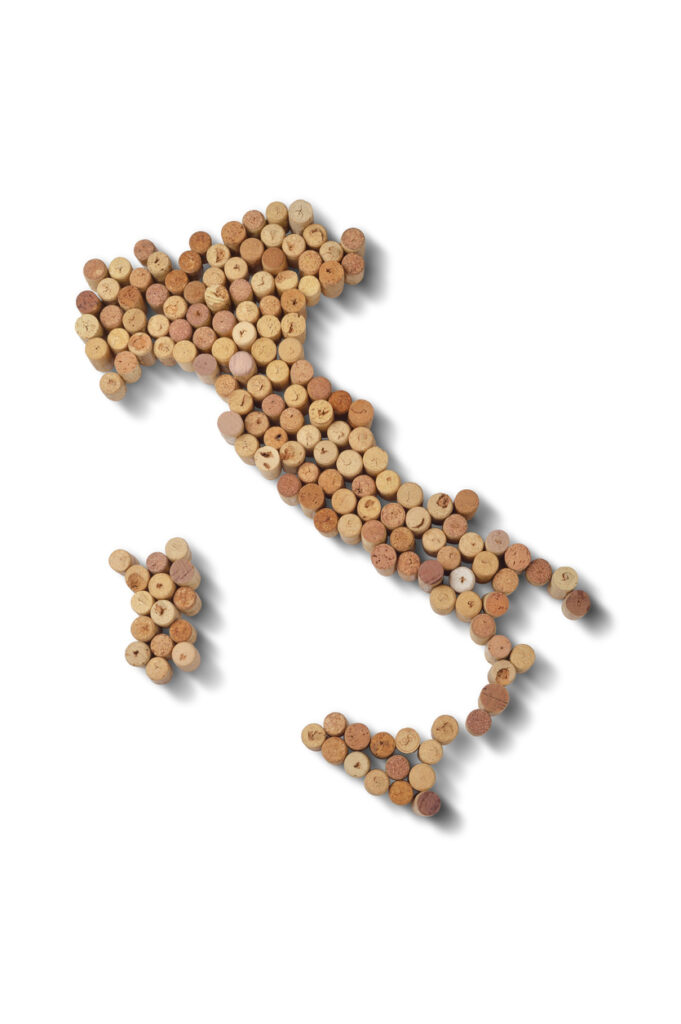
Pinot Grigio is often associated with light-bodied wines that boast a zesty acidity and delicate flavors.
While it may be known for its bright citrus notes and hints of green apple, some winemakers are pushing boundaries by experimenting with extended skin contact or barrel aging to add complexity and depth to their creations.

Sweetness of Sauvignon Blanc vs Pinot Grigio
When it comes to comparing the sweetness of Sauvignon Blanc versus Pinot Grigio, it’s important to understand that both white wines tend to fall on the drier side of the spectrum. However, there are subtle differences in their flavor profiles that can affect how sweet they appear.
For instance, Sauvignon Blanc often displays vibrant tropical fruit flavors like pineapple and passionfruit, which can give an impression of sweetness even though the wine itself may be relatively dry.
On the other hand, Pinot Grigio typically showcases crisp citrus notes like lemon and lime, which contribute to a refreshing and tangy character without veering into overt sweetness.

What sets these two white wines apart is not necessarily their differing levels of sweetness but rather the balance they achieve between acidity and fruitiness. Sauvignon Blanc tends to possess higher acidity than Pinot Grigio, lending it a zesty vibrancy that complements its fruity overtones.
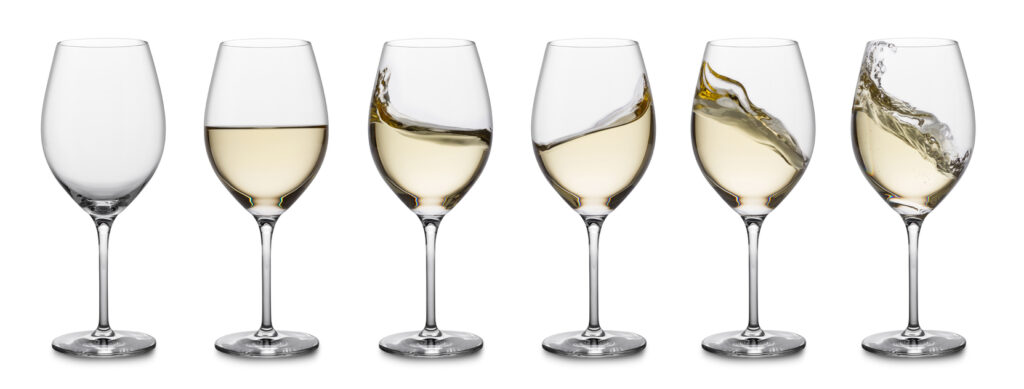
Ultimately, when comparing the sweetness of Sauvignon Blanc versus Pinot Grigio, it’s important to consider factors beyond just sugar content.
Flavor of Sauvignon Blanc vs Pinot Grigio
Sauvignon Blanc and Pinot Grigio are two popular white wines, each with its own distinct flavor profile. Sauvignon Blanc is known for its lively acidity, vibrant citrus flavors, and herbaceous notes. It often has a bright gooseberry or grapefruit aroma that instantly wakes up your senses.
On the other hand, Pinot Grigio flavors tend to be more delicate and subtle in terms of flavor. It offers a crisp and refreshing pinot grigio taste with hints of green apple, pear, and lemon zest.

Food Pairing of Sauvignon Blanc vs Pinot Grigio
When it comes to food pairing, both Sauvignon Blanc and Pinot Grigio offer distinct flavors that can complement a variety of dishes. Sauvignon Blancs, known for their crisp acidity and vibrant citrus notes, are versatile wines that pairs beautifully with seafood and light salads. This white wine varietal pairs especially with seafood ceviche.
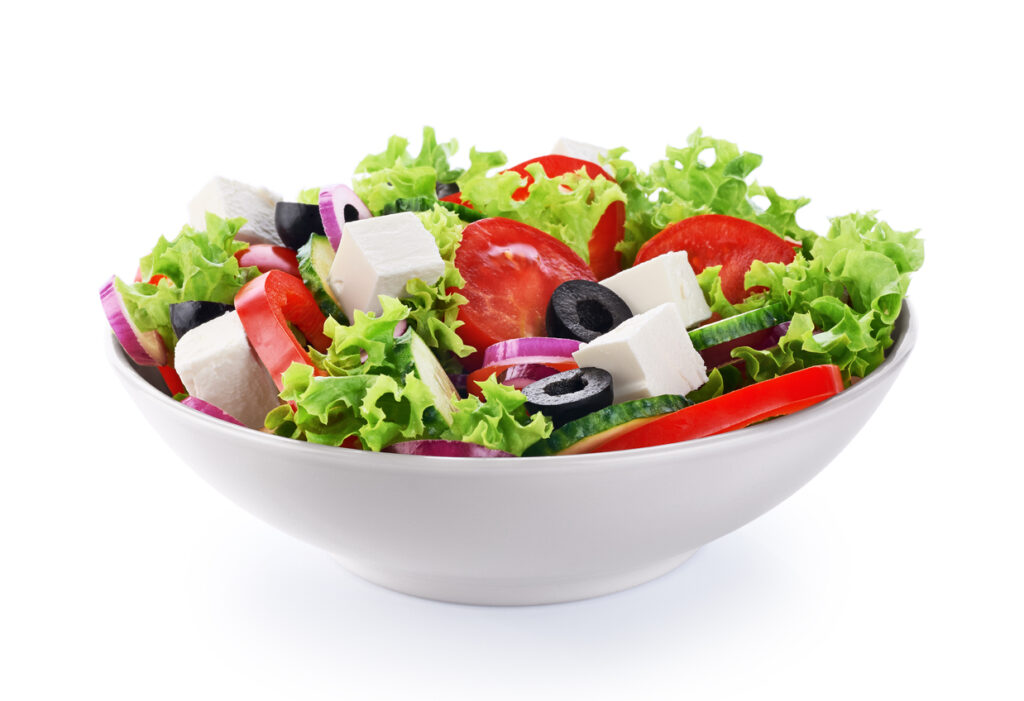
Sauvignon Blanc vs Pinot Grigio Food Pairings
The zesty acidity of this white wine cuts through the richness of oily fish like salmon or sardines, enhancing their natural flavors and creating a harmonious balance on the palate. Additionally, the herbaceous undertones in Sauvignon Blancs make them ideal companions for dishes seasoned with fresh herbs such as basil or cilantro. Sauv blancs pair well with fish dishes or fresh oysters

On the other hand, especially italian style Pinot Grigio exhibits a more subtle character with delicate floral aromas and notes of pear and apple. This gentle nature makes it a fantastic match for lighter fare such as chicken breast or vegetarian dishes like grilled vegetables.
The mild intensity of Pinot Grigio won’t overpower these delicate flavors but rather enhance them, allowing the natural sweetness of ingredients to shine through. Consider pairing this white wine with roasted asparagus drizzled with lemon-infused olive oil for an elegant combination that highlights both the white wine’s nuances and earthy vegetable flavors.

Difference between Pinot Grigio vs Sauvignon blanc
One of the key differentiators between the two is their level of acidity. Pinot Grigio white wine tends to have a milder acidity, resulting in a softer and more approachable taste. In contrast, Sauvignon Blanc tasting notes are characterized by its vibrant and zesty acidity, giving it a lively and refreshing quality on the palate.
Flavor profiles
Pinot Grigio often displays notes of citrus fruits such as lemon and lime, along with subtle floral hints. This makes it an ideal choice for those seeking a light and crisp white wine with a touch of elegance.
On the other hand, Sauvignon Blanc typically showcases flavors of green apple, gooseberry, and sometimes even tropical fruits like passion fruit or pineapple.
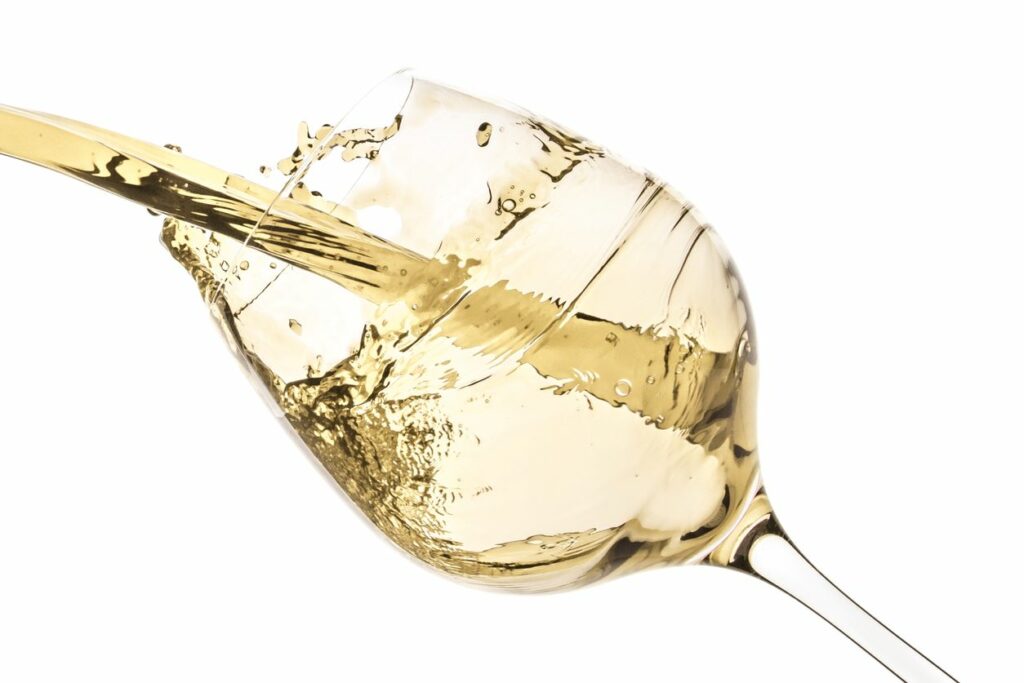
Both wines are rarely stored in oak barrels. They are mostly produced in stainless steel tanks.
Sweetneess
Are both pinot grigio and sauvignon blanc sweet? In terms of sweetness, both pinot grigio and sauv blanc wines generally fall on the drier side. However, there are slight variations to consider. Pinot Grigio tends to lean towards being drier with minimal residual sugar content, while Sauvignon Blanc may exhibit slightly more perceptible sweetness with a higher residual sugar content due to its fruity notes.
Food pairings
When pairing with food, the subtle nuances in these wines play an important role in enhancing different culinary experiences – from light seafood dishes that harmonize with Pinot Grigio’s delicate flavors to vibrant salads that resonate with the invigorating nature of Sauvignon Blanc.
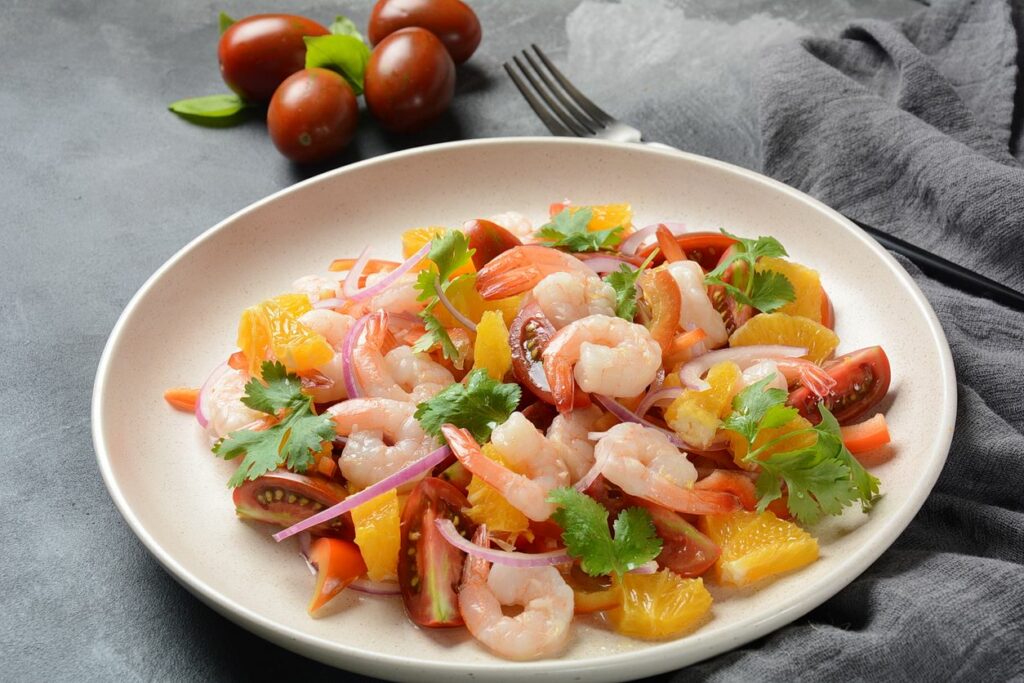
Pinot Grigio vs Sauvignon Blanc: Grapes
The differences in their grape characteristics create distinct flavor profiles that wine enthusiasts can’t get enough of.
Pinot Grigio grapes, also known as Pinot Gris, typically have a grayish-blue skin and produce wines with a delicate floral aroma and flavors of green apple, pear, and lighter citrus notes.
On the other hand, Sauvignon Blanc grapes exhibit a vibrant green skin and offer wines characterized by zesty acidity, herbaceous notes, and tropical fruit flavors like passionfruit and gooseberry.
Interestingly, the terroir plays a significant role in shaping the grape’s attributes. For example, Pinot Grigio thrives in cool climates like northern Italy or Oregon’s Willamette Valley where it retains high acidity levels while developing its signature crispness.

Conversely,Sauvignon Blanc tends to excel in regions with warmer temperatures such as New Zealand’s Marlborough or California’s Napa Valley to enhance its aromatics and tropical fruit notes.
Pinot Grigio vs Sauvignon Blanc: Region
When it comes to the region, both Pinot Grigio and Sauvignon Blanc offer distinct expressions of terroir that captivate the palate. Pinot Grigio, hailing from northeastern Italy’s cool climates, produces a crisp and light-bodied white wine with notes of green apple and citrus. The mineral-rich soils in regions like Friuli-Venezia Giulia contribute to its distinctive flinty character, while the breezy Adriatic Sea influence adds a refreshing acidity.

On the other hand, Sauvignon Blanc thrives in diverse regions such as Marlborough in New Zealand and the Loire Valley in France. New Zealand Sauvignon Blanc dazzles with vibrant tropical fruit flavors like passionfruit and gooseberry, reflecting its sunny maritime climate. Meanwhile, French Sauvignon Blanc offers a more herbaceous profile with zesty citrus aromas due to its limestone-rich soils and cooler temperatures.
How to serve Sauvignon Blanc vs Pinot Grigio
Serving white wine is an art, and when it comes to Sauvignon Blanc versus Pinot Grigio, a little attention to detail can enhance the drinking experience of wine drinkers. A medium-sized, tulip-shaped glass for Sauvignon Blanc helps concentrate its aromatic compounds, allowing the vibrant aromas of citrus and tropical fruits to fully express themselves as you raise the glass to your nose.
On the other hand, a smaller and narrower glass for Pinot Grigio captures its more delicate aromatics without losing any of their complexity.

Temperature also plays a significant role in bringing out the best in these wines. Serving Sauvignon Blanc at around 45-50°F (7-10°C) heightens its zesty acidity and bright flavors. Chilled just slightly below that range, it becomes refreshing without numbing your taste buds.
For Pinot Grigio enthusiasts, aim for a temperature of 50-55°F (10-13°C). This slightly warmer range allows its nuanced flavors of ripe apples and pears to reveal themselves fully while maintaining that desired crispness on the palate.

Remembering these simple tips next time you serve Sauvignon Blanc or Pinot Grigio will ensure that you are getting the most out of these delightful white wines. From choosing an appropriate glass shape to finding that ideal temperature sweet spot, every small action elevates your wine drinking experience to new heights.
Remembering these simple tips next time you serve Sauvignon Blanc or Pinot Grigio will ensure that you are getting the most out of these delightful white wines. From choosing an appropriate glass shape to finding that ideal temperature sweet spot, every small action elevates your white wine drinking experience to new heights.
3 Wines to Compare to Sauvignon Blanc and Pinot Grigio
Looking for wines that are similar to Pinot Grigio and Sauv Blanc? Look no further than Chardonnay, Riesling, and Picpoul de Pinet.
Sauvignon Blanc vs Pinot Grigio vs Chardonnay: A Comparison of White Wines
Chardonnay, known for its versatility, offers a wide range of styles from buttery and oaky to crisp and floral, making it a great alternative to the light and refreshing nature of Pinot Grigio. Sauvignon Blanc and Chardonnay are typical white wines from the Bordeaux region next to Semillon wines.
Riesling, on the other hand, is a delightful option for those who love the zesty acidity found in Sauvignon Blanc. With its fruity notes and varying levels of sweetness, Riesling can cater to diverse taste preferences.
For those who appreciate the coastal charm of Sauv Blanc and Pinot Grigio, Picpoul de Pinet is an excellent choice. Hailing from the Languedoc region in France, this wine carries bright citrus flavors with a touch of sea breeze essence.
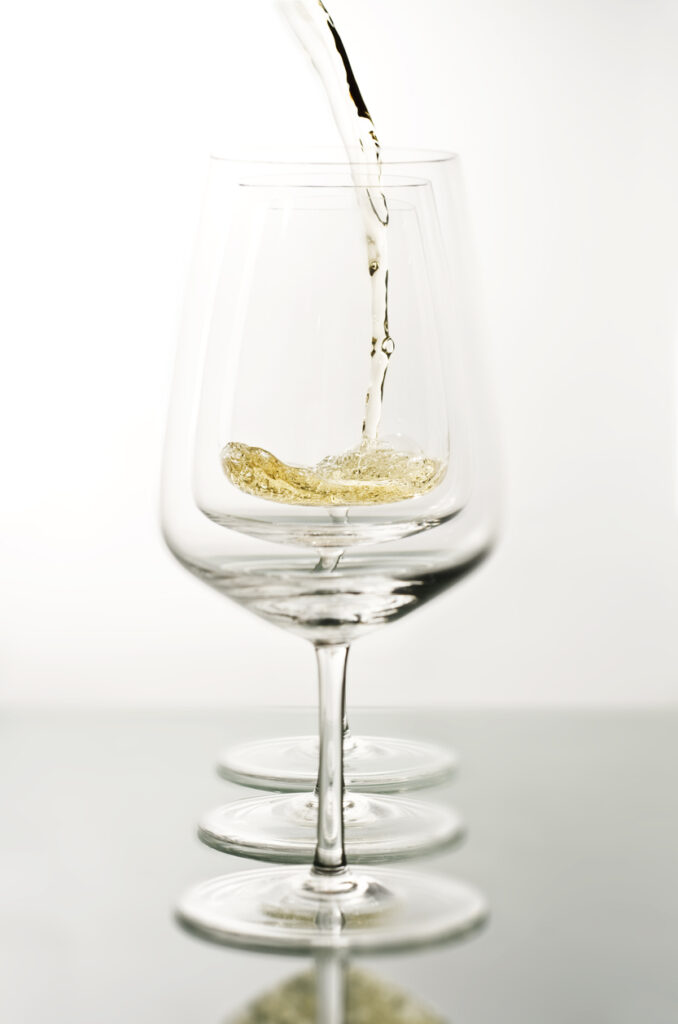
Its crisp acidity pairs exceptionally well with seafood dishes while capturing the same lively spirit as its counterparts. So next time you’re looking to explore wines akin to Pinot Grigio and Sauvignon Blanc, why not give one of these intriguing options a try?
Which is Sweeter Chardonnay or Pinot Grigio?
It’s generally agreed that Chardonnay tends to be sweeter than Pinot Grigio. This is due to the inherent characteristics of the grapes themselves, with Chardonnay grapes typically having more natural sugars than Pinot Grigio.
However, it’s important to note that winemaking styles can influence the perception of sweetness in both wines. For example, a Chardonnay that undergoes malolactic fermentation may have a creamier mouthfeel and perceived sweetness compared to one that doesn’t.
Conclusion
In conclusion, both Sauvignon Blanc and Pinot Grigio offer unique characteristics and flavors that cater to different preferences. Sauvignon Blanc is known for its crispness, vibrant acidity, and tropical fruit notes. This makies it an excellent choice for those who enjoy a refreshing and zesty white wine. On the other hand, Pinot Grigio is often described as light-bodied with delicate aromas of citrus fruits and flowers. It appeals to individuals who prefer a more subtle and elegant taste. Ultimately, the choice between the two comes down to personal preference and what kind of experience one seeks from their wine.

